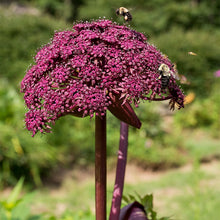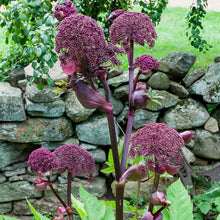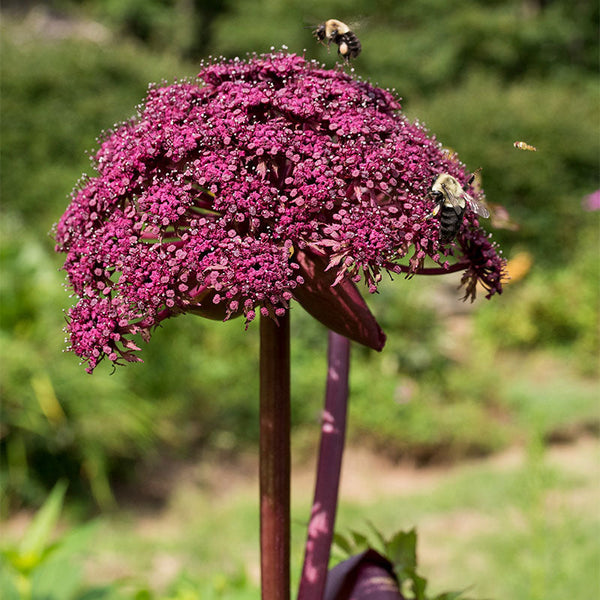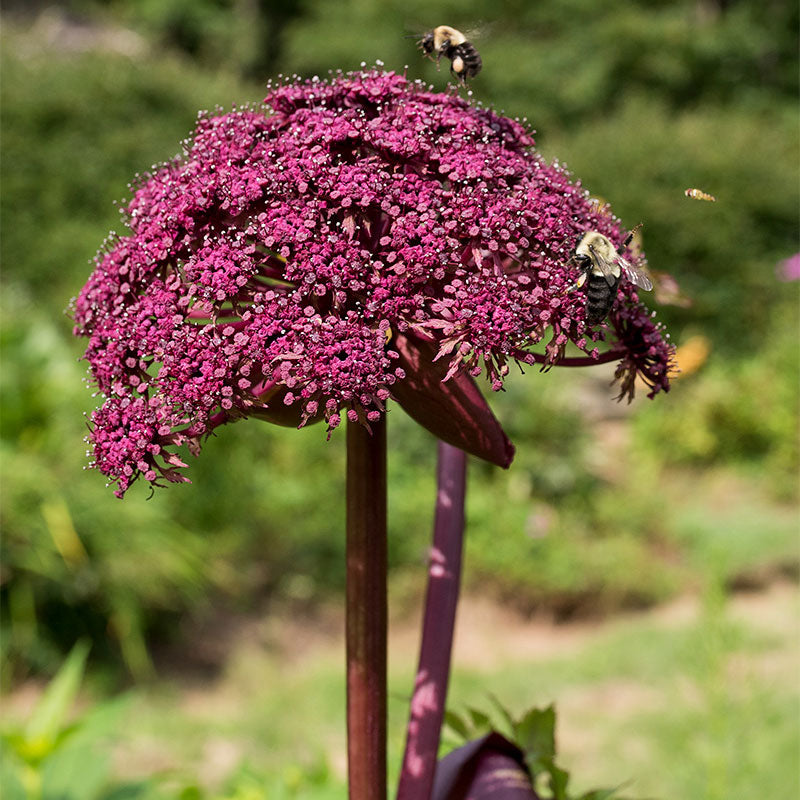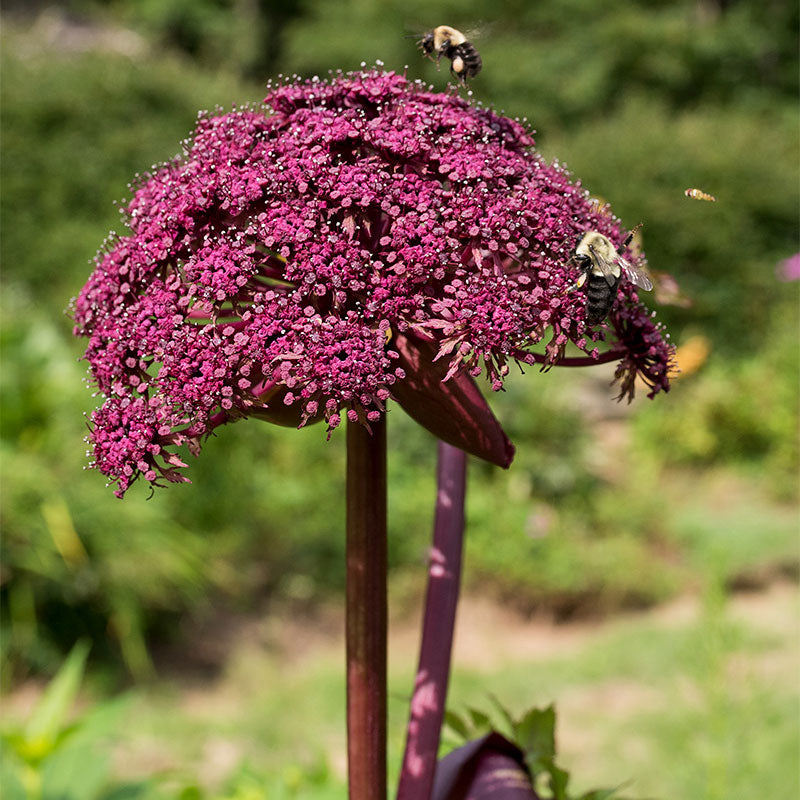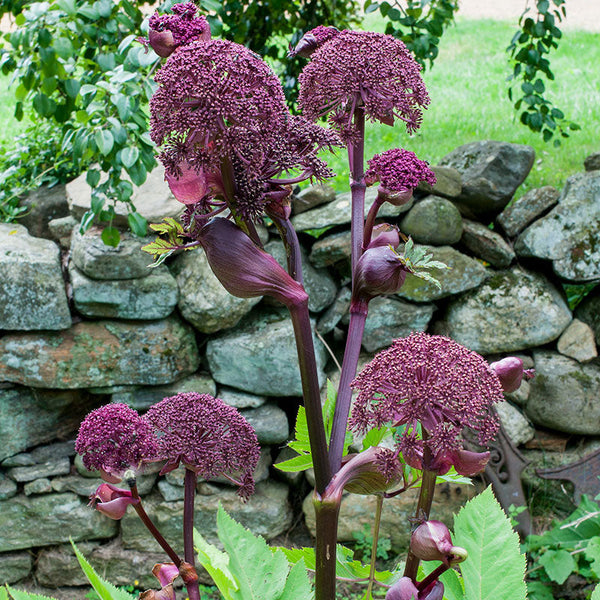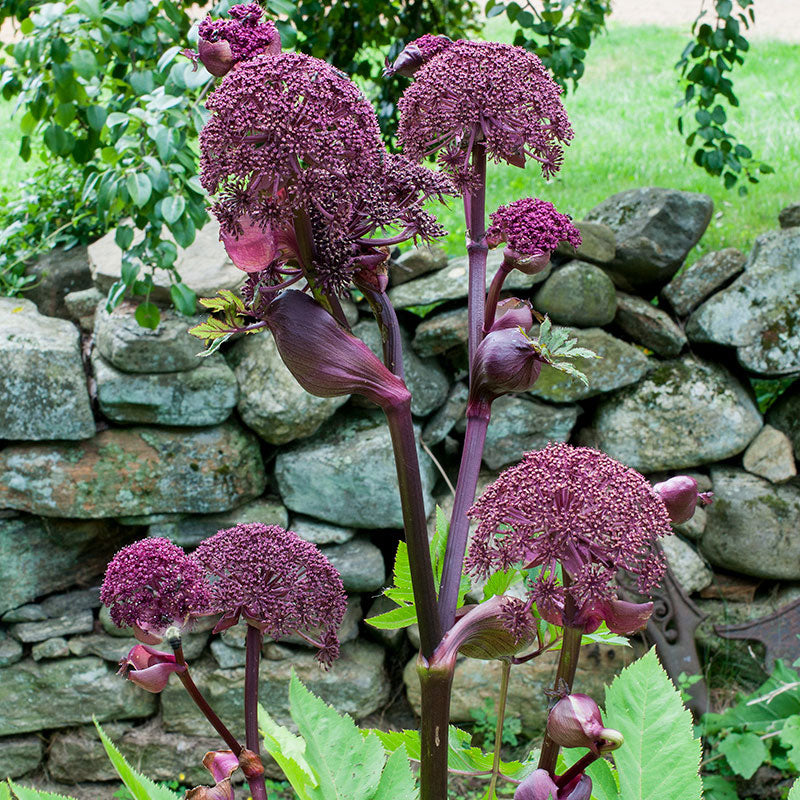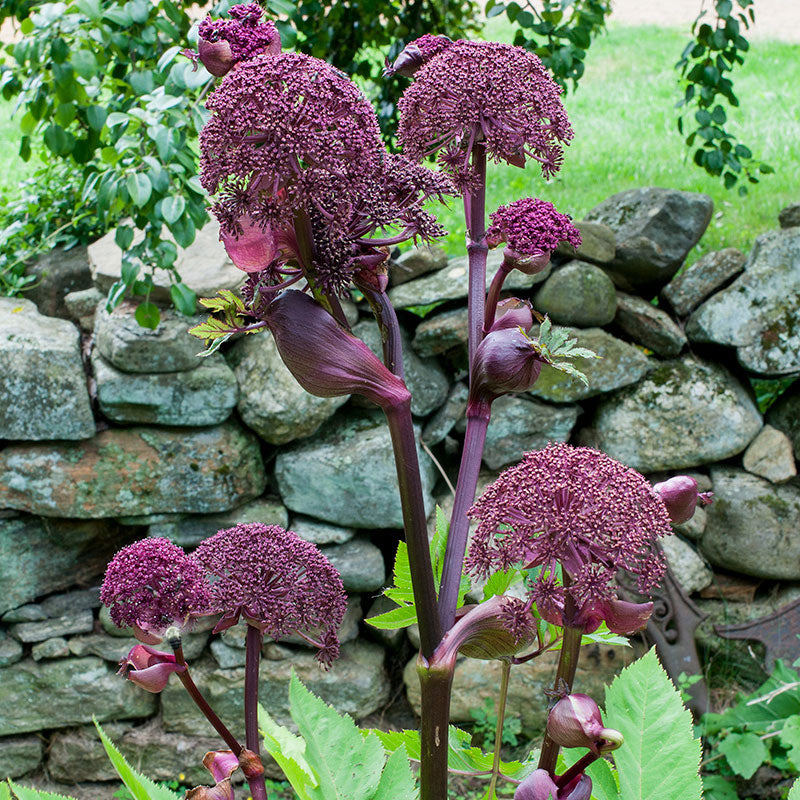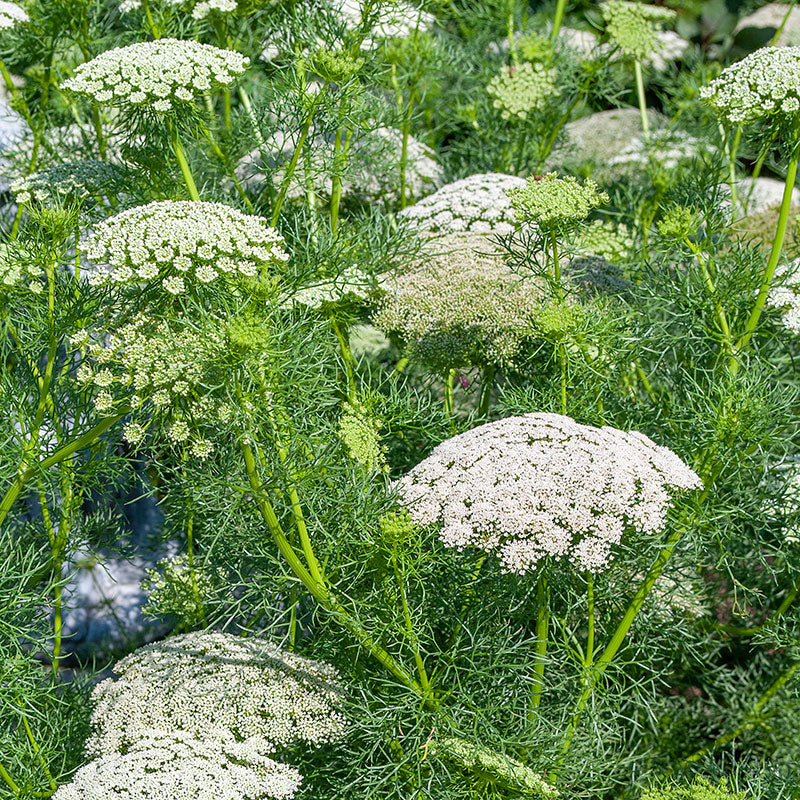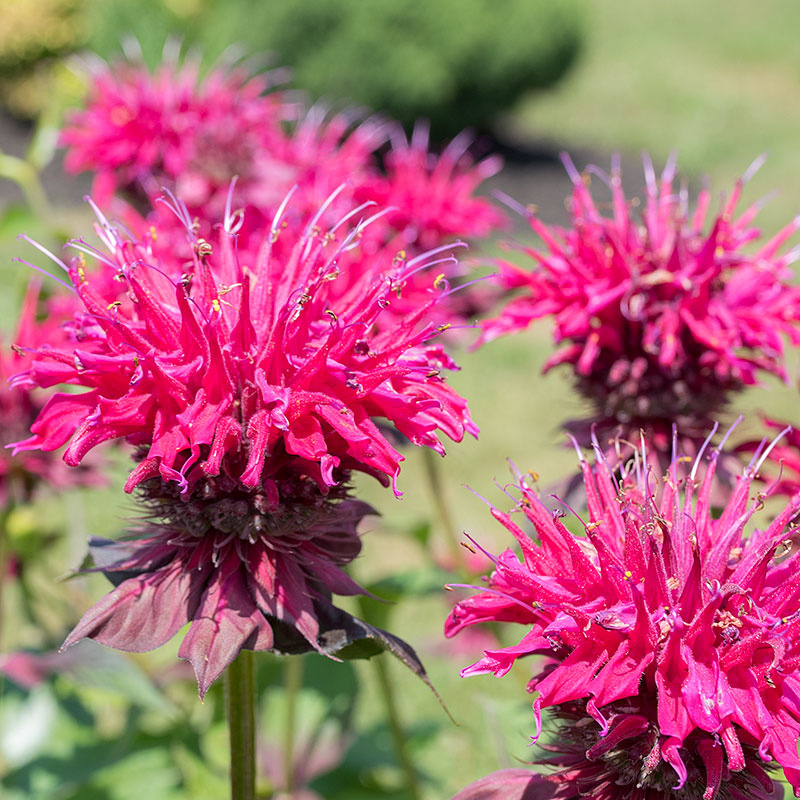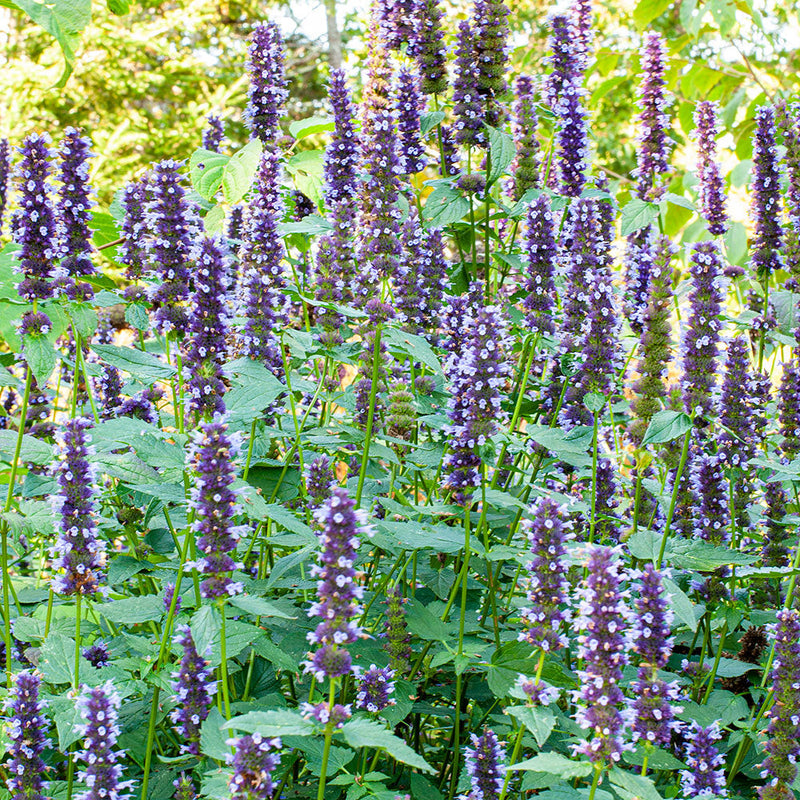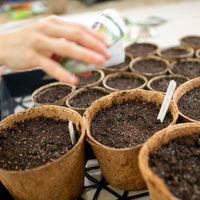SOWING INSTRUCTIONS
Depth:
1/16"; keep seeds cool and dry, such as in the refrigerator, until sowing. Germinate best when provided with light.
Starting Indoors:
Sow indoors in pots 8 weeks before plantingout. Keep at 35-40°F for 2-3 weeks, then 60-70°F. Alternatively,move trays outside for two to three weeks, then back insidefor germination. If no germination after 4 weeks, chill again.
Starting Outdoors:
Direct sow in fall or earliest spring, or wintersow into pots in the shade, covered with a thin layer of clean sand and a wire screen to keep out mice and voles. Check for moisture at regular intervals.
PLACEMENT & CULTIVATION
Korean Angelica grows foliage the first season, then thrusts up an attention-getting floral stem the following summer; its heavy buds bursting open and revealing the large, rounded red-purple flowers. It looks best when planted against fine-textured grasses or other airy, see-through plants at the mid-to-back border. After blooming, decorative seed heads form but remove most to encourage a repeat show the following year. You can sow the seeds annually or allow them to drop and self-sow to renew your plantings. A top beneficial insect-attracting plant that provides pollen and nectar for numerous helpful insects, and the seeds attract birds.
Watering Details:
About 1" per week, more during prolonged dry weather.
Soil pH:
Prefers slightly acidic to neutral but tolerates slightly alkaline soils.
Fertilizer:
Mix in 2-4" of compost prior to planting. Supplement with an organic granular or liquid feed once in late spring and again in late summer if desired.
Diseases & Pests:
Does not grow well in dry soils. No major pests or disease, but leafminers or aphids may appear. If slugs or snails attack, sprinkle some diatomaceous earth, crushed eggshells, or iron phosphate pellets on the soil around the plant.
When to Cut for Bouquets:
Cut for dry arrangements before seed heads age.






























